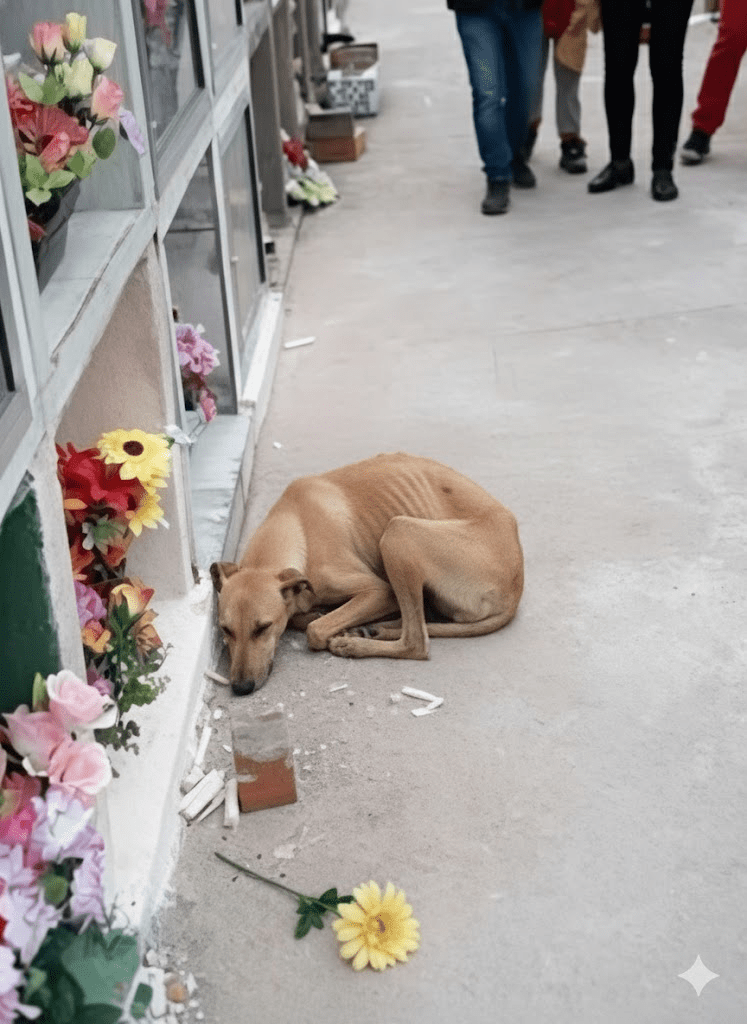In the hushed, solemn rows of a cemetery, where stories of lives lived are etched in stone and fragrant blossoms offer solace to grieving hearts, a different kind of narrative unfolds. It is the story of a stray dog, gaunt and weary, whose ribs are stark lines against its emaciated frame. This creature, a specter of neglect, wanders through a space dedicated to remembrance, perhaps seeking its own form of solace, or simply a fleeting moment of respite from the harsh realities of its existence. Its gaze, directed towards a niche adorned with vibrant artificial flowers, seems to hold a profound yearning—a silent question posed to a world that has largely overlooked its suffering. The contrast between the dog’s profound vulnerability and the surrounding symbols of human care and remembrance is striking, highlighting a poignant disconnect. While humans mourn and honor their departed, this living being, equally deserving of compassion, navigates a landscape of indifference, a poignant embodiment of the countless animals forgotten or abandoned, their silent struggles often unseen or unacknowledged. This single image compels us to look beyond the surface, to question our collective responsibility, and to consider the profound impact of empathy, or its absence, on the most defenseless among us.
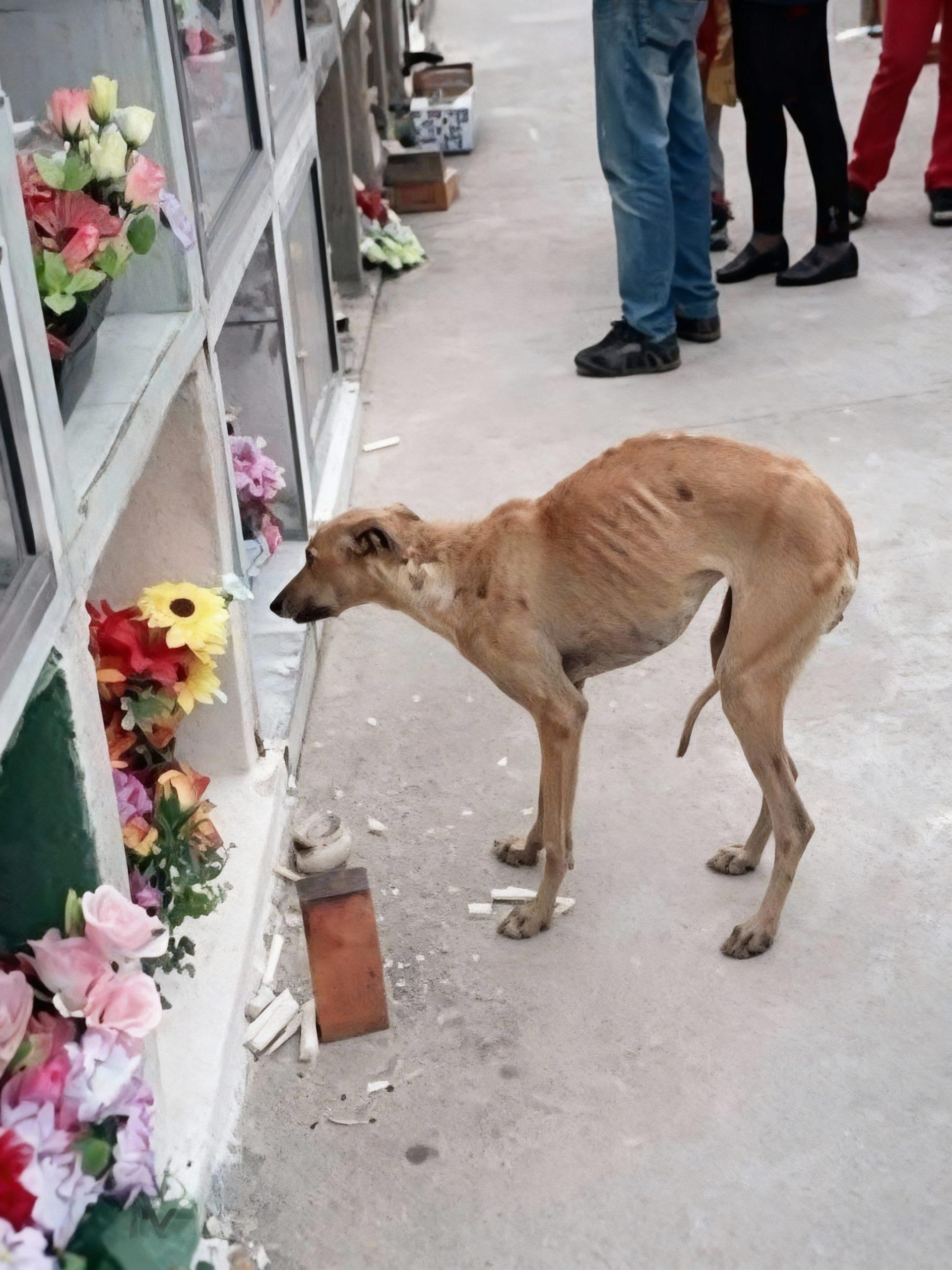
The stark reality of animal abandonment and neglect is a global crisis, a silent epidemic that plays out in every city and rural landscape. Millions of animals, once cherished pets or born into the harsh realities of the wild, find themselves without a home, a meal, or a comforting touch. The image of the emaciated dog in the cemetery is a powerful microcosm of this widespread issue. It speaks to the countless animals who face hunger, disease, and the constant threat of danger on the streets. Their lives are a continuous struggle for survival, marked by an unending search for food, water, and shelter. This vulnerability is often compounded by human indifference, where these sentient beings are seen as nuisances rather than individuals deserving of care and protection. The emotional toll on these animals is immeasurable, as they endure loneliness, fear, and the profound trauma of abandonment.
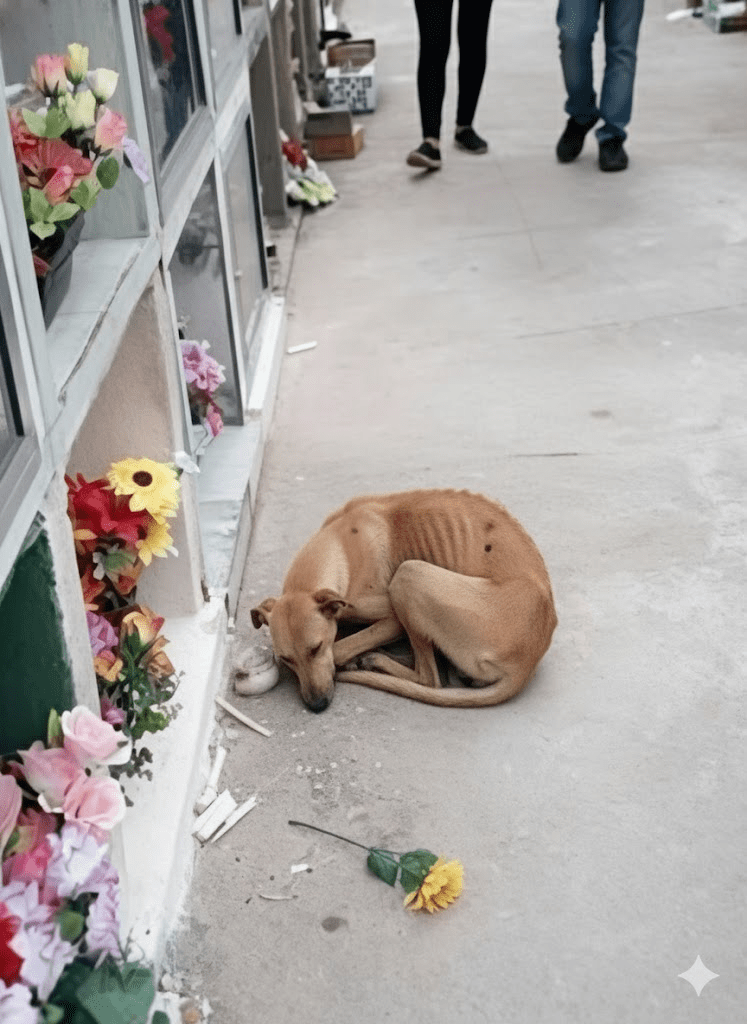
This photograph, with its poignant subject, serves as a mirror reflecting a deeply ingrained societal problem. It challenges us to confront the uncomfortable truth that despite our advanced societies and professed values of compassion, a significant portion of the animal population suffers immensely due to human actions or inactions. The visible signs of hunger and distress on the dog’s body are not merely physical ailments; they are symbols of a breakdown in empathy, a failure to extend our circle of concern to all living creatures. The very presence of this suffering animal in a place of remembrance forces a stark juxtaposition: while we grieve for the past, we often overlook the present suffering that unfolds before our very eyes. This disconnect highlights a fundamental flaw in our approach to animal welfare, suggesting that our compassion is often selective, limited to those we deem worthy or convenient.
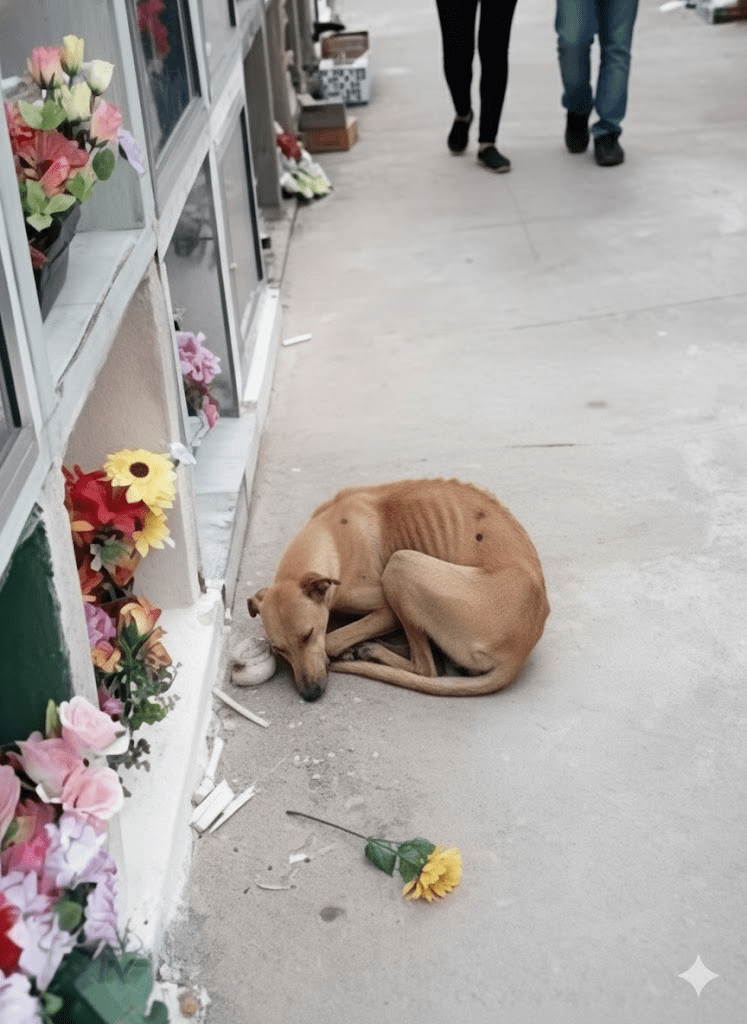
The dog’s solitary exploration of the cemetery hints at a deeper, more profound search. It is not merely looking for food or shelter; it is seeking connection, a moment of acknowledgment in a world that has rendered it invisible. Its lean towards the bright, artificial flowers is a poignant gesture, perhaps a subconscious yearning for the beauty and vibrancy that life once held, or a desperate hope for a kindness that mirrors the care evident in the memorial displays. This scene underscores the innate capacity of animals to seek comfort and find meaning even in the most desolate circumstances. It is a testament to their resilience and their enduring spirit, even when faced with overwhelming adversity. The simple act of observation, of this animal’s silent quest, transcends its immediate circumstances and speaks to a universal need for belonging and recognition.
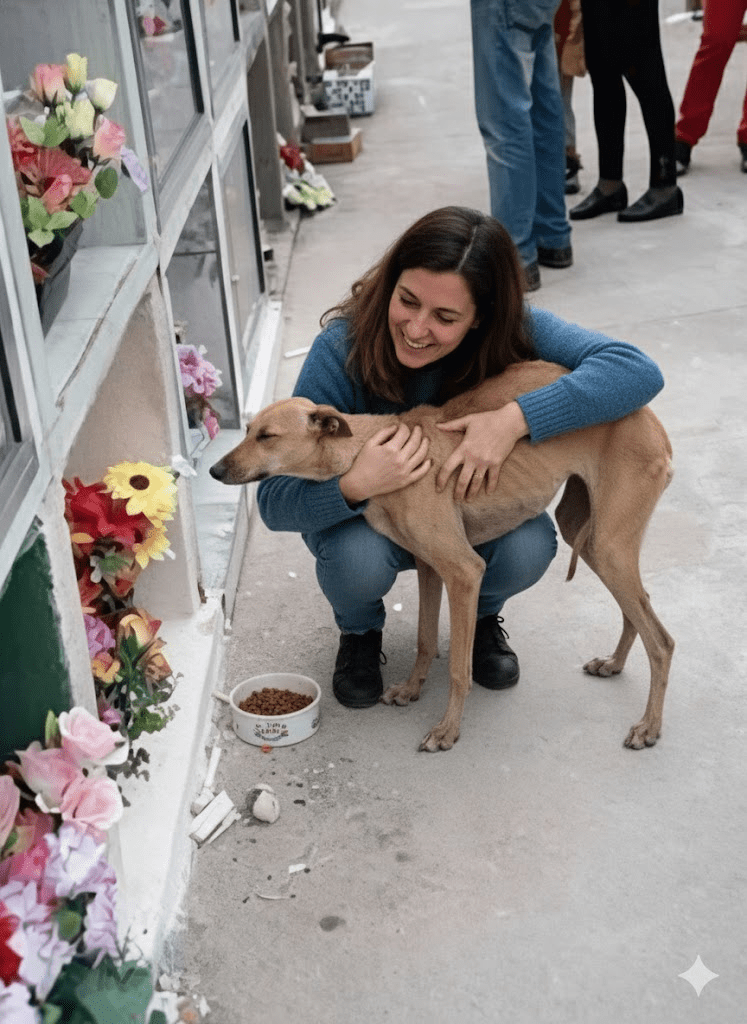
Amidst this somber backdrop, glimmers of hope and acts of compassion offer a powerful counter-narrative. The presence of individuals in the background, though seemingly detached from the dog’s immediate plight, represents the potential for human intervention. These passersby, like many in society, possess the capacity to make a difference, however small. Whether through direct rescue, providing food and water, or advocating for stronger animal welfare policies, every act of kindness contributes to a larger movement of change. The transformation from an abandoned, fearful creature to one that accepts a gentle touch or a nourishing meal is a testament to the power of human-animal connection and the inherent trust that animals can still place in us, despite past traumas.
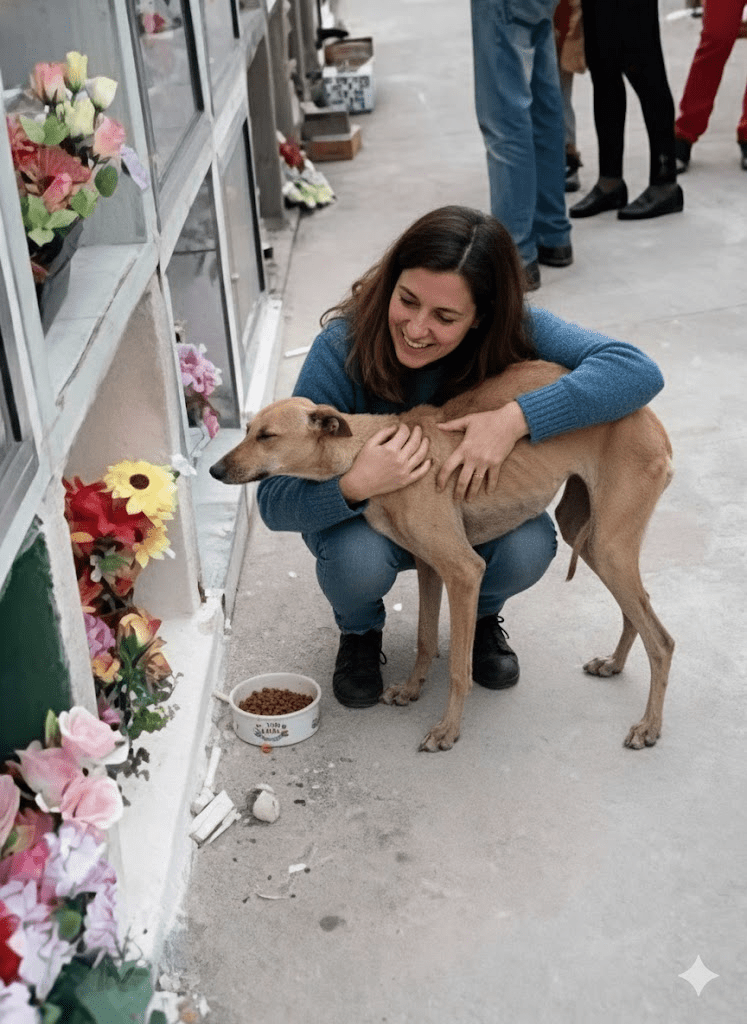
Effective solutions to combat animal abandonment require a multi-faceted approach, encompassing public education, stricter enforcement of animal welfare laws, and accessible spay/neuter programs. Education campaigns can raise awareness about responsible pet ownership, highlighting the commitment required to care for an animal throughout its life. Legal frameworks must be robust, with penalties that deter cruelty and abandonment. Furthermore, widespread and affordable spay/neuter initiatives are crucial in controlling pet overpopulation, which is a primary driver of the stray animal crisis. Community involvement, through volunteer efforts at shelters and rescue organizations, is also vital in providing direct care and finding loving homes for abandoned animals.
